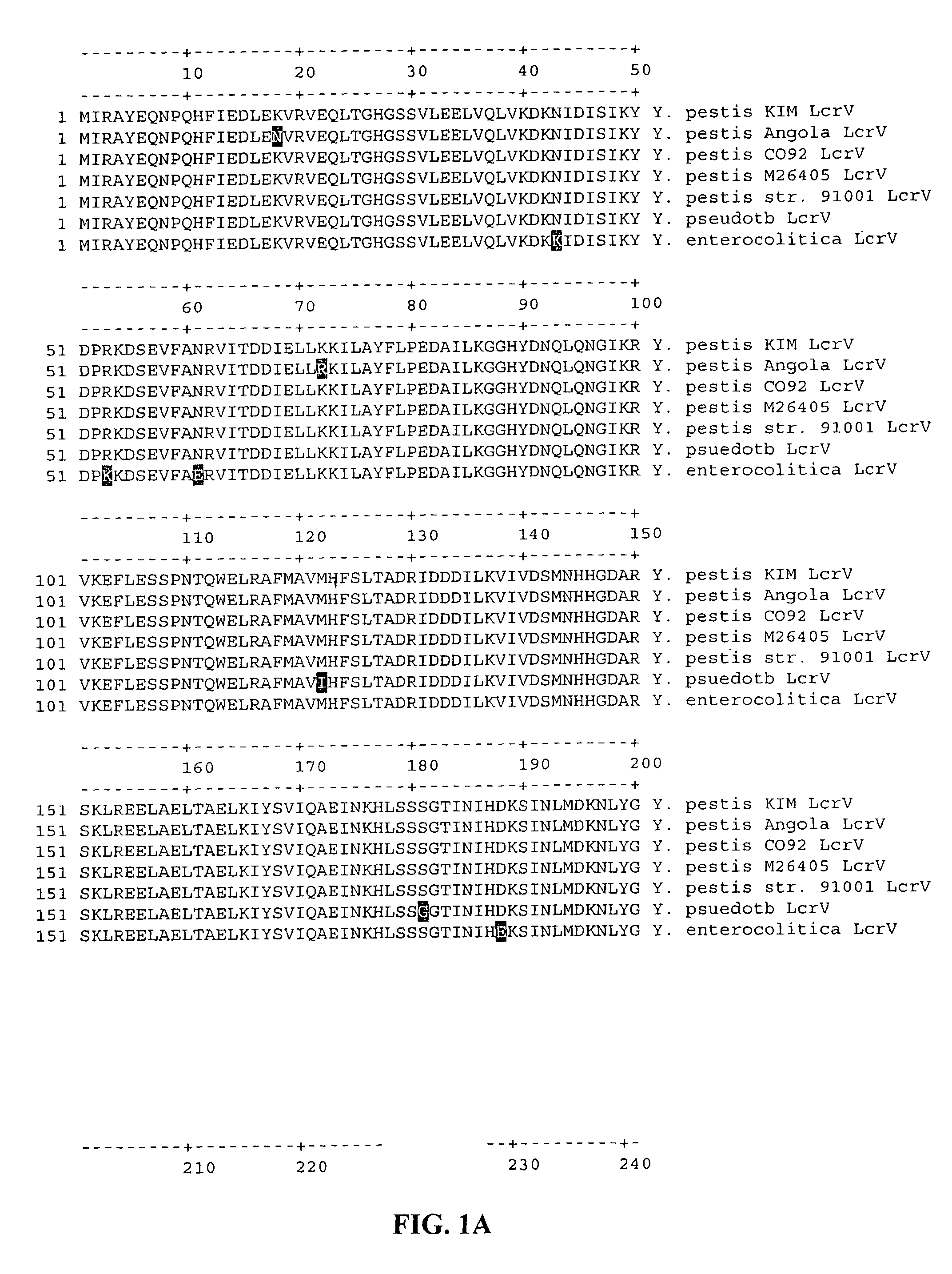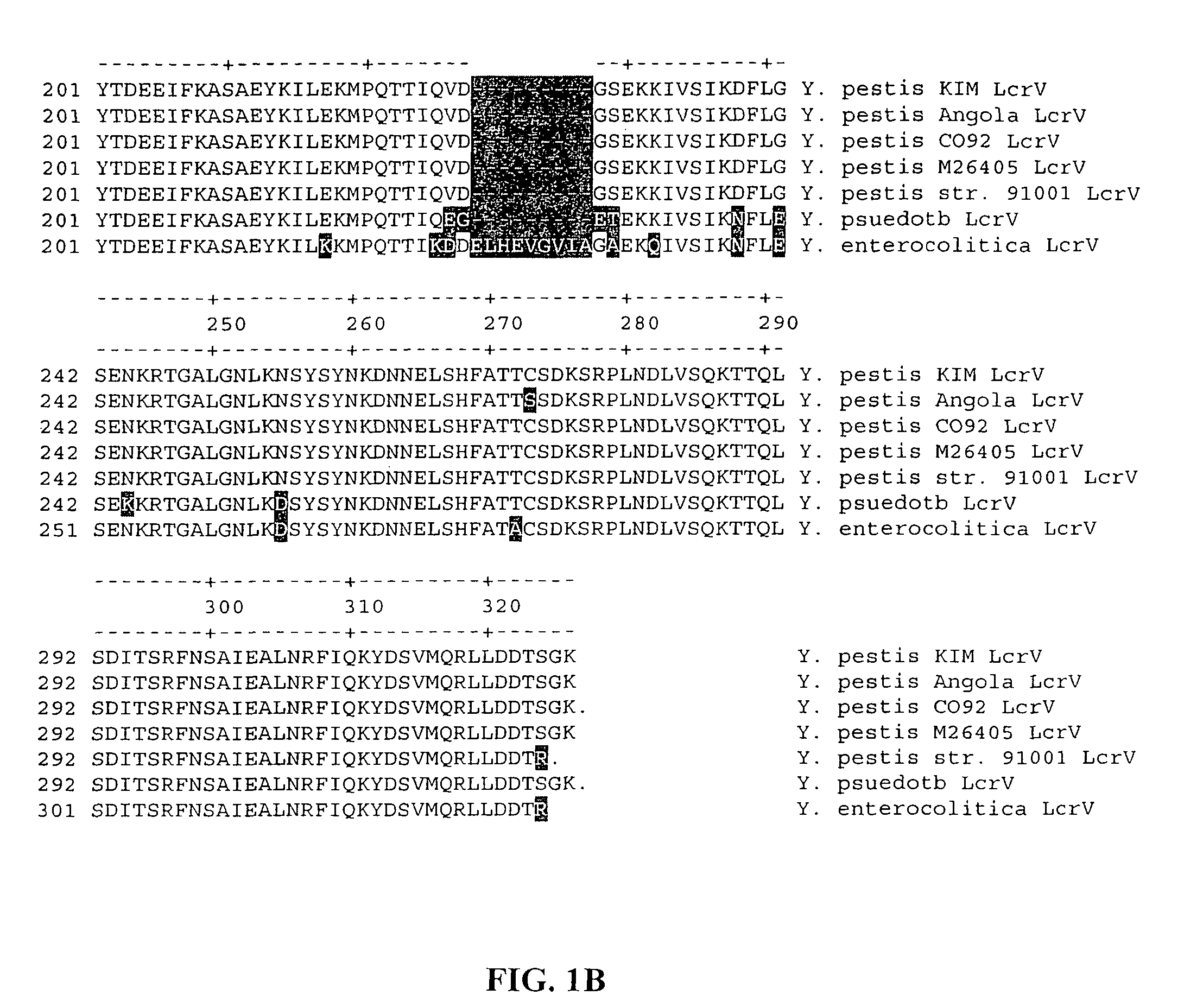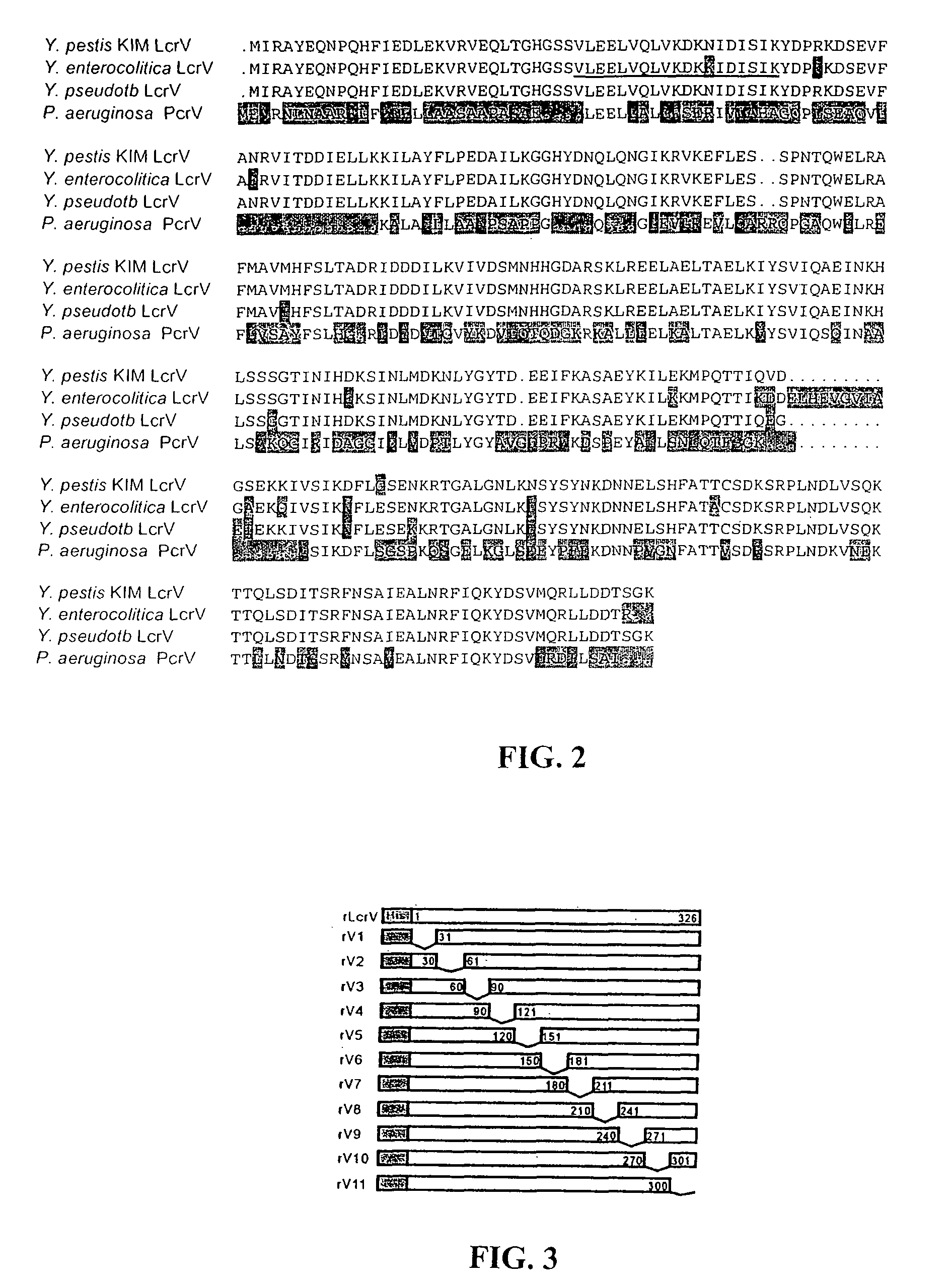Methods and compositions involving LcrV proteins
a technology of lcrv protein and composition, applied in the field of immunology and pathology, can solve the problems of unresolved whether plague vaccines without immune suppressive properties can be generated, inflammation, infection or even death, etc., and achieve the effects of reducing the risk of death, reducing the number of bacteria, and reducing the length of infection
- Summary
- Abstract
- Description
- Claims
- Application Information
AI Technical Summary
Benefits of technology
Problems solved by technology
Method used
Image
Examples
example 1
Materials and Methods for Examples 2-4
[0267]Construction of rLcrV Expression Vectors
[0268]Y. pestis strain KIM coding sequence of lcrV was PCR amplified with primers specifying abutted NdeI and BamHI restriction sites. Amplified DNA fragment was cloned into pCR2.1 (Invitrogen), recombinant plasmid was isolated and cloned insertions were verified by DNA sequencing. Inserts containing the correct sequence were excised with NdeI / BamHI cleavage and subcloned into the expression vector pET16b (Novagen) cut with the same enzymes to yield prLcrV. To generate rV1 and rV1 deletions (FIG. 3), lcrV DNA fragments with 5′ or 3′ truncations were amplified with oligonucleotide primers that annealed at the appropriate sites and harbored either abutted NdeI (5′ truncation) or BamHI (3′ truncation) restriction sites, respectively. PCR products were cloned into pET16b as described above. To generate internal 30 codon deletions, lcrV was PCR amplified with two primer pairs, generating 5′ and 3 coding f...
example 2
rLcrV Variants and their Immune Modulatory Properties
[0278]Recombinant LcrV (rLcrV) with N-terminal decahistidyl tag was purified from bacterial lysates by affinity chromatography on Ni-NTA. FIG. 3 displays a diagram of the variants. The immune modulatory properties of LcrV are thought to result from an interaction of the Y. pestis virulence factor with TLR2 and CD14 on the surface of immune cells, in particular murine macrophages (Sing et al., 2002b). To examine the role of primary immune cells during IL-10 release and rLcrV-mediated immune suppression, macrophages were isolated from the peritoneal cavity of C57BL / 6 mice. Peritoneal macrophages were treated with 10 μg rLcrV or its variants and cytokine secretion was analyzed after 18 hours in culture (FIG. 4). rLcrV induced a 40-fold increase in the release of IL-10 from peritoneal macrophages as compared to PBS alone, consistent with previous observations (Sing et al., 2002b). As a control, rPcrV, the Pseudomonas protective antige...
example 3
rLcrV Variants and Their Immune Modulatory Properties in Human Cells
[0280]To test whether LcrV activates IL-10 secretion in human cells, purified recombinant proteins were added to human THP-1 monocytic cells and incubated for 18 hours prior to ELISA analysis for cytokines. As a control, addition of LPS to THP-1 cells stimulated IL-10 release 750-fold when compared with PBS mock treated cells. Addition of rLcrV activated IL-10 secretion 180-fold, whereas rPcrV did not stimulate any release of the cytokine. Furthermore, rV10 also failed to activate IL-10 release in human monocytes, similar to our observations in murine macrophages (FIG. 6).
PUM
| Property | Measurement | Unit |
|---|---|---|
| temperatures | aaaaa | aaaaa |
| temperatures | aaaaa | aaaaa |
| temperatures | aaaaa | aaaaa |
Abstract
Description
Claims
Application Information
 Login to View More
Login to View More - R&D
- Intellectual Property
- Life Sciences
- Materials
- Tech Scout
- Unparalleled Data Quality
- Higher Quality Content
- 60% Fewer Hallucinations
Browse by: Latest US Patents, China's latest patents, Technical Efficacy Thesaurus, Application Domain, Technology Topic, Popular Technical Reports.
© 2025 PatSnap. All rights reserved.Legal|Privacy policy|Modern Slavery Act Transparency Statement|Sitemap|About US| Contact US: help@patsnap.com



